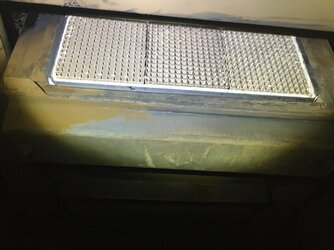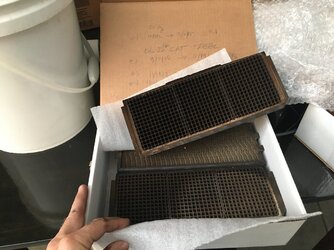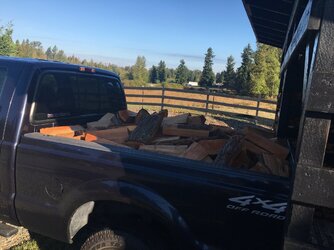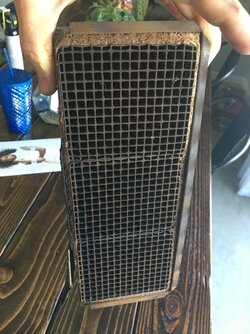Since the beginning I have been tracking each cat’s lifespan and this latest one was one of the longest at 20 burning months, or about 12000 hours at low 95% of the time burning softwoods. I believe that burning on low is actually harder on a cat because the cat is doing all the work with no primary flame. The cat meter is always quite high though stove output stays low.
I am impressed with how easy it is to swap these cats. The new ones are cheap at 230$ and come with a new gasket. My old cats look perfect, no physical damage, but just stop working rather suddenly. This last one would stall at medium thermostat settings.
I also decided to trash my collection of used cats.
Yes, they’re cheap. I just sold a 5 cords of firewood 1/3 cord at a time for 200$ each. Just pop a new cat in to keep it running efficiently, minimum pollution, and maximum burn times. You’ll quickly save enough wood to pay for the new cat.
The Midwest Hearth cat warranty expires after 12000 hours of use which is coincidentally the average I’ve gotten per cat over the last decade.





I am impressed with how easy it is to swap these cats. The new ones are cheap at 230$ and come with a new gasket. My old cats look perfect, no physical damage, but just stop working rather suddenly. This last one would stall at medium thermostat settings.
I also decided to trash my collection of used cats.
Yes, they’re cheap. I just sold a 5 cords of firewood 1/3 cord at a time for 200$ each. Just pop a new cat in to keep it running efficiently, minimum pollution, and maximum burn times. You’ll quickly save enough wood to pay for the new cat.
The Midwest Hearth cat warranty expires after 12000 hours of use which is coincidentally the average I’ve gotten per cat over the last decade.







 BK should be providing one under warranty. But that would require sending it in and waiting for the replacement. I just ordered one to have in stock.
BK should be providing one under warranty. But that would require sending it in and waiting for the replacement. I just ordered one to have in stock.